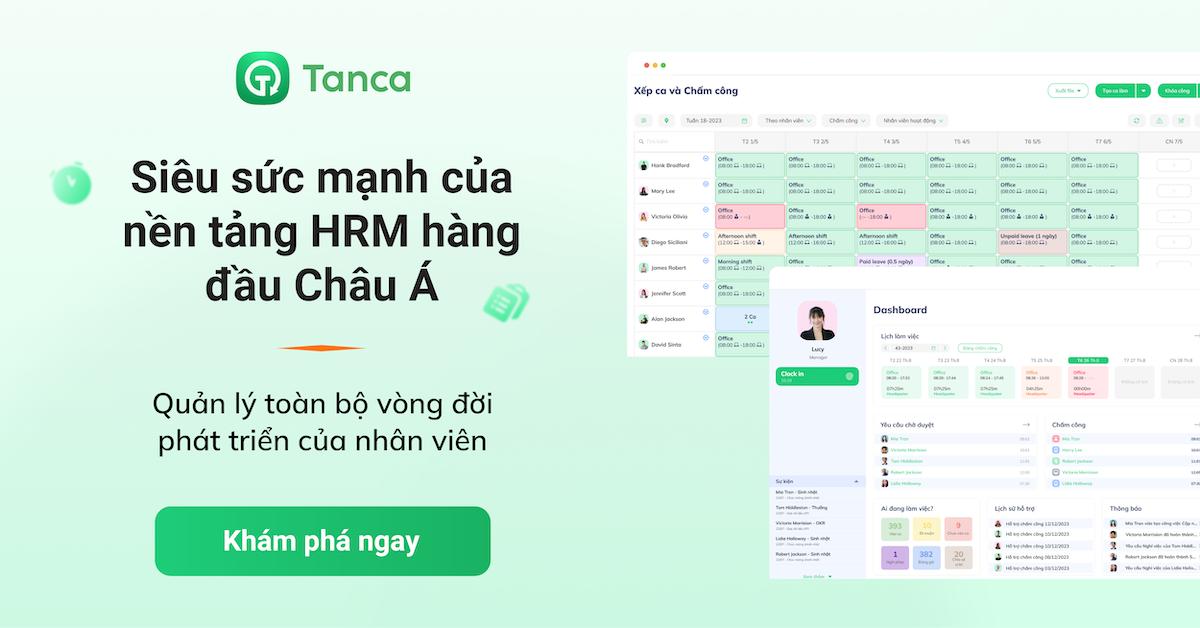Reducing workplace stress is more crucial than ever, as it significantly impacts both employees' well-being and overall productivity. In the U.S. alone, work-related stress costs businesses nearly $300 billion annually, with an estimated $2.2 trillion impact on the economy when considering factors such as employee disengagement, chronic diseases, and work-related injuries. Unfortunately, long-term stress is all too common.
The APA’s annual Stress in America survey consistently finds that work is a significant source of stress for a majority of Americans.
While you can’t always avoid the tensions that occur on the job, you can take proactive steps to manage work-related stress, ensuring a healthier and more productive work environment.
Causes of Work-Related Stress

Understanding the causes of work-related stress is crucial for creating a healthier, more productive work environment. Here are the top reasons why it's important to identify and address these stressors, along with the top 10 causes from The Workplace Health Report 2023:
- Excessive Workload: An overwhelming workload, cited by 73% of employees, is the leading cause of work-related stress due to unrealistic deadlines and too many tasks.
- Lack of Control: About 31% of employees feel stressed due to not having a say in decision-making, performance targets, or task completion processes.
- Lack of Support: Insufficient support from colleagues or supervisors contributes to stress for 29% of employees, leading to increased anxiety and job dissatisfaction.
- Demanding Roles and Managers: Approximately 27% of employees experience stress from overly demanding roles or unsupportive, critical managers.
- Poor Work Relationships: Difficult relationships with colleagues or supervisors affect 20% of employees, creating a toxic work environment and increasing stress levels.
- Job Security: Concerns about job security, affecting 16% of employees, cause significant stress due to fear of layoffs or lack of permanent contracts.
- Insufficient Training: About 14% of employees feel stressed due to inadequate training, leading to poor job performance and lack of confidence.
- Commuting: Long or stressful commutes add to stress levels for 12% of employees, disrupting work-life balance and reducing free time.
- Working from Home: Around 8% of employees find working from home stressful due to isolation, blurred boundaries between work and personal life, and technical issues.
- Poor Working Conditions: Uncomfortable or unhealthy work environments contribute to stress, affecting employees' physical and mental well-being.
10 Ways To Lower Stress And Anxiety At Work

Creating a supportive work environment is crucial for reducing stress and anxiety among employees. Here are ten effective strategies to promote a healthier and more productive workplace:
1. Foster a Balanced Work-Life Approach
Achieving a balanced work-life approach is crucial for reducing stress and enhancing overall well-being among employees. Companies can promote this balance by implementing reasonable working hours and offering flexible scheduling options. Flexible work schedules enable employees to manage their personal commitments alongside their professional responsibilities, which alleviates the pressure of long workdays. Respecting boundaries between work and personal time fosters a sustainable professional life and helps prevent burnout.
Moreover, employers can support work-life balance through policies such as remote work options, paid time off, and wellness programs. Recognizing the importance of personal time and encouraging employees to take breaks creates an environment where employees feel valued and supported. This supportive atmosphere, in turn, boosts job satisfaction and productivity.
2. Enhance Employee Benefits
Reducing workplace stress can be effectively achieved by providing comprehensive health benefits. Employers can offer access to health professionals, preventive care, and wellness resources. Health benefits that include mental health support, such as counseling services or Employee Assistance Programs (EAPs), can significantly alleviate stress and anxiety, addressing both the physical and emotional needs of employees.
In addition, offering wellness programs that include fitness classes, nutrition counseling, and stress management workshops can help employees maintain their overall health and well-being. Investing in these areas demonstrates a company's commitment to their workforce's well-being, leading to higher employee retention rates and fostering a more positive workplace culture.
3. Promote Open Communication
Open and honest communication between employees and management is essential for reducing workplace anxiety. Regular feedback sessions and open-door policies foster an environment where employees feel heard and supported. Training managers in effective communication, active listening, and conflict resolution equips them to address employee concerns and create a supportive atmosphere.
Anonymous feedback channels also enable employees to express their concerns without fear of retribution. Promoting transparency and trust builds a culture of openness where employees feel comfortable discussing their challenges and seeking support. This approach not only reduces stress but also enhances collaboration and teamwork.
4. Encourage Use of Vacation Time
Promoting the use of vacation time is crucial for helping employees recharge and reduce stress. Employers should encourage their workforce to take regular breaks and use their allotted vacation days. Assuring employees that their jobs are secure and that their work can be managed in their absence is essential for creating a culture where taking time off is not only accepted but encouraged.
To further support this, companies can implement policies that discourage excessive work during vacations, such as turning off email notifications or delegating tasks to colleagues. By emphasizing the importance of rest and relaxation, employers can help employees return to work refreshed and more productive.
5. Organize Team Building Activities
Planning team building activities can enhance morale and strengthen interpersonal relationships among employees. Off-site outings, volunteer projects, or company picnics during work hours provide opportunities for employees to bond and collaborate outside the typical work environment. These activities can improve communication, trust, and teamwork, leading to a more cohesive and supportive workplace.
Including remote employees in team building activities through virtual events or hybrid gatherings ensures that all team members feel included. By fostering a sense of community and belonging, employers can reduce workplace stress and create a more positive and engaged workforce.
6. Implement Flexible Work Options
Flexible work arrangements can significantly reduce stress by giving employees more control over their schedules. Options such as remote work, adjustable start and end times, or compressed workweeks enable employees to balance their work and personal lives more effectively. This flexibility allows employees to manage personal responsibilities, such as childcare or healthcare appointments, without the added stress of rigid work hours.
Employers can support these arrangements by providing the necessary technology and tools for remote work, such as laptops, secure internet access, and collaboration software. Offering flexibility helps companies create a more adaptable and resilient workforce, leading to increased job satisfaction and productivity.
7. Acknowledge Employee Achievements
Regular recognition and rewarding of employee achievements is a powerful way to boost morale and reduce stress. Simple gestures like verbal appreciation, thank-you notes, or small rewards can make employees feel valued and motivated. Public acknowledgment of accomplishments in team meetings or company newsletters can also enhance the sense of appreciation and foster a positive work culture.
Formal recognition programs, such as employee of the month awards or performance bonuses, can further incentivize and reward outstanding performance. Celebrating successes allows employers to create a positive and motivating work environment where employees feel appreciated and driven to excel.
8. Encourage Regular Breaks
Promoting the importance of taking regular breaks throughout the day can help employees recharge and reduce the risk of burnout. Short breaks can improve focus, creativity, and overall productivity. Employers can provide facilities for relaxation, such as quiet rooms, outdoor spaces, or wellness areas, where employees can take a few moments to unwind.
Encouraging employees to step away from their desks, take a walk, or engage in mindfulness exercises during breaks can significantly reduce stress levels. By normalizing break times and promoting a culture of self-care, companies can help employees maintain their well-being and perform at their best. Advocating for regular breaks throughout the day can help employees recharge and reduce the risk of burnout. Short breaks enhance focus, creativity, and overall productivity. Employers should offer facilities for relaxation, such as quiet rooms, outdoor spaces, or wellness areas, where employees can take a few moments to unwind.
9. Create a Welcoming Office Environment
Creating a welcoming and enjoyable office space can have a profound impact on employee mood and stress levels. Elements such as comfortable seating, natural lighting, plants, artwork, and recreational activities can transform the work environment into a more inviting and relaxing space. A pleasant office atmosphere enhances creativity, reduces stress, and helps employees feel more at ease.
Moreover, amenities like coffee stations, snack bars, or relaxation areas contribute to a positive workplace culture. Investing in the physical work environment allows employers to create a space where employees enjoy spending time and feel more motivated and productive.
10. Use Tools to Help Track Work
Implementing tools to monitor work progress and manage tasks significantly reduces stress caused by disorganization and heavy workloads. Project management software, time tracking apps, and collaboration platforms help employees maintain organization and effectively manage their responsibilities. These tools provide clear insights into project timelines, deadlines, and individual tasks, reducing anxiety related to work management.
Providing training on these tools enhances their effectiveness. Equipping employees with the necessary resources to manage their workload efficiently lowers stress levels and fosters a more organized and productive work environment.
How To Relieve Work Stress Quickly: Ranked from Fastest to Slowest

1. Acknowledge Your Stress
Recognizing and acknowledging your stress can immediately help lift the weight off your shoulders. This simple act can be the first step towards finding a solution and asking for help.
2. Chew Gum
Chewing gum, especially scented varieties, can reduce stress quickly. Vigorous chewing for at least three minutes can help lower your stress response.
3. Force a Laugh or Smile
Even if you don't feel like it, forcing a laugh or smile can boost your mood and reduce stress almost instantly. Laughter triggers the release of endorphins, the body's natural feel-good chemicals.
4. Adjust Your Posture
Make sure you’re not slouching, as posture can significantly affect your mood. Sitting or standing up straight can help you feel more confident and less stressed.
5. Mute Phone Notifications
Muting your phone notifications can provide immediate relief from constant interruptions and help you focus better, reducing stress levels.
6. Inhale Essential Oils
Inhaling essential oils like lavender, rose, or peppermint can quickly calm your mind. Use a diffuser or apply a few drops to a handkerchief and breathe deeply.
7. Take a Short Walk
A quick walk, even if it's just around the office, can help clear your mind and reduce stress. Physical activity releases endorphins and helps you feel more relaxed.
8. Stretch at Your Desk
Perform simple stretches at your desk to relieve muscle tension and improve circulation. Stretching can help reduce physical discomfort and mental stress. If possible, attend yoga classes or use designated spaces for yoga practice to further promote relaxation and well-being.
9. Listen to Music
Playing a happy or calming song can instantly lift your spirits and reduce stress. Music has a powerful effect on emotions and can quickly change your mood.
10. Drink Stress-Reducing Tea
Taking a few minutes to make and drink a cup of stress-reducing tea, like chamomile or green tea, can be therapeutic. The act of stepping away and the calming effects of the tea can help lower stress levels. Companies can support this by providing a variety of herbal teas in the office kitchen.
Conclusion
Incorporating various strategies to reduce workplace stress not only enhances employee well-being but also boosts overall productivity and job satisfaction. Leveraging advanced tools like scheduling software and project planning tools can streamline tasks and improve project efficiency, significantly reducing the anxiety associated with disorganization and tight deadlines.
Additionally, using human resource management platforms like Tanca can simplify administrative tasks and ensure accurate tracking of work hours, further supporting a stress-free environment. By combining these technological solutions with supportive policies and comprehensive health benefits, companies can create a healthier, more productive workplace where employees feel valued and supported.













